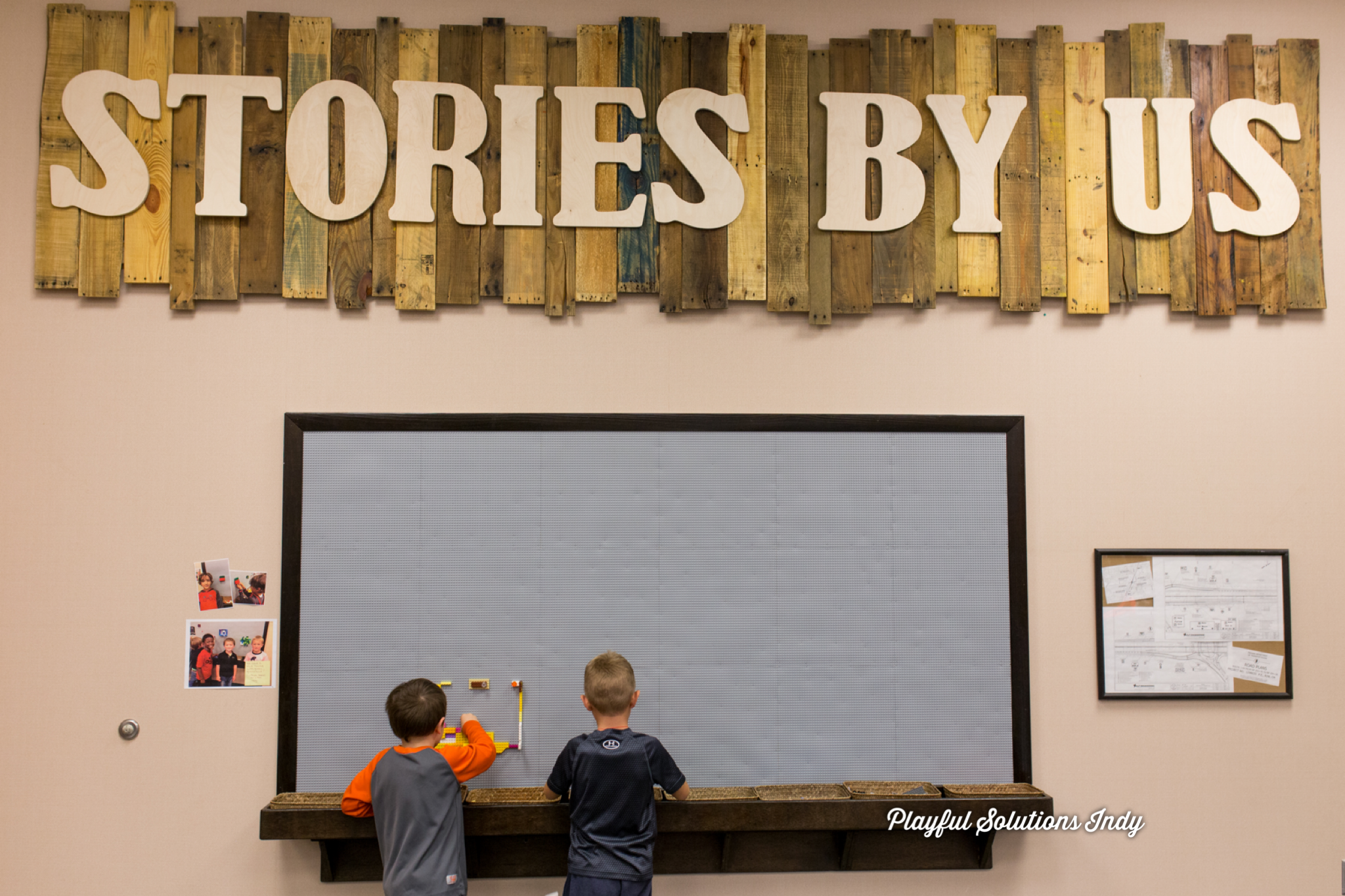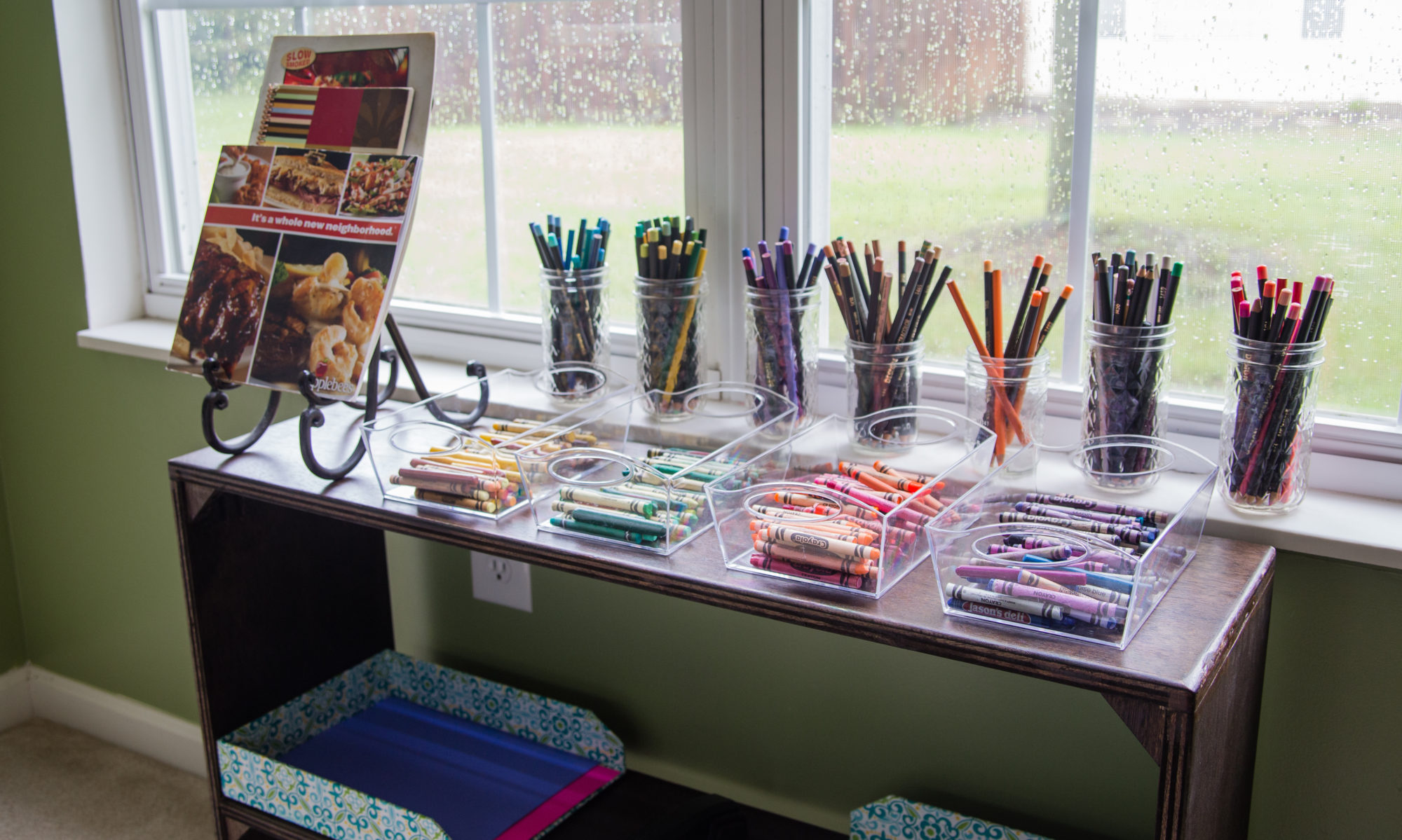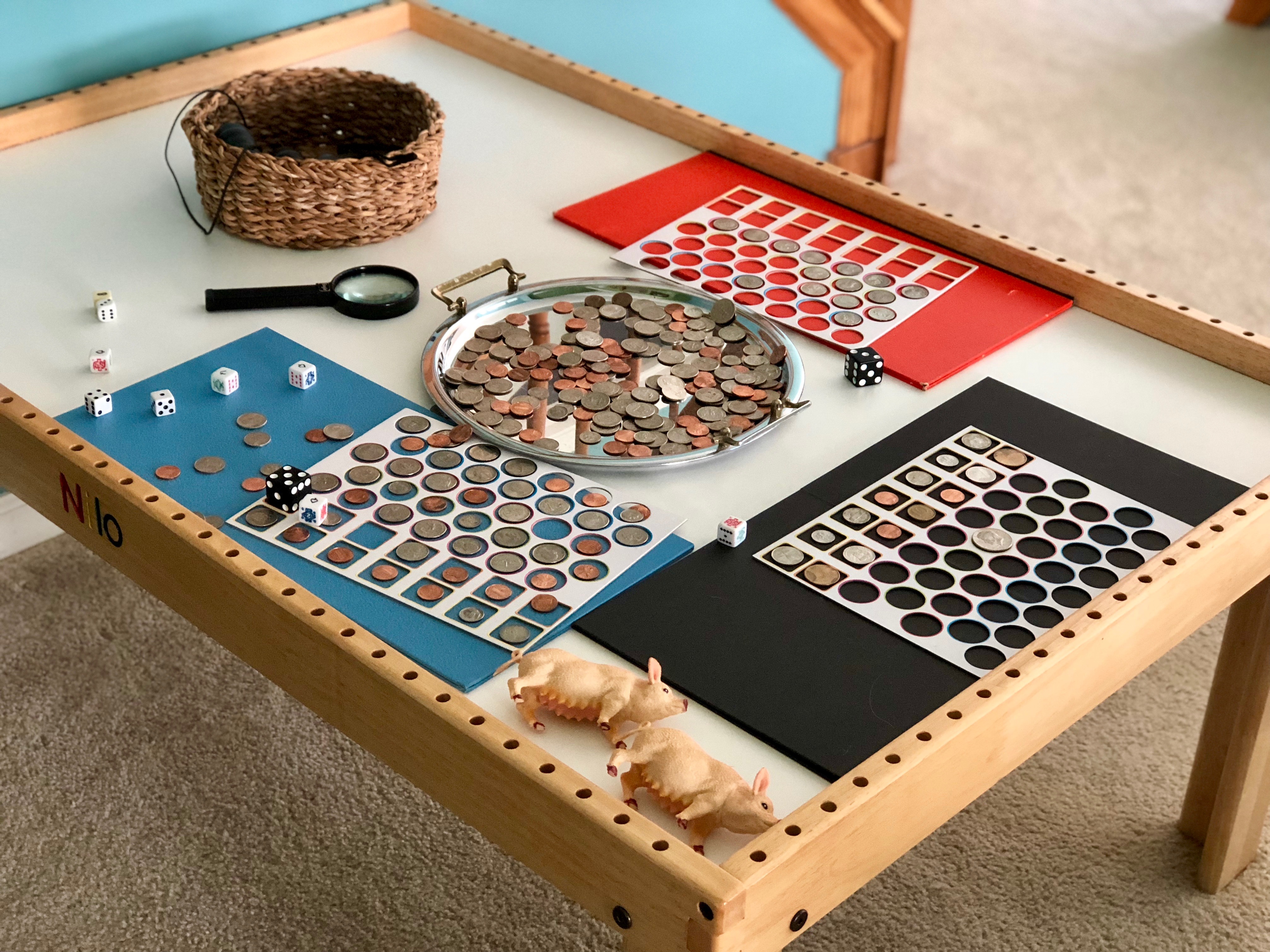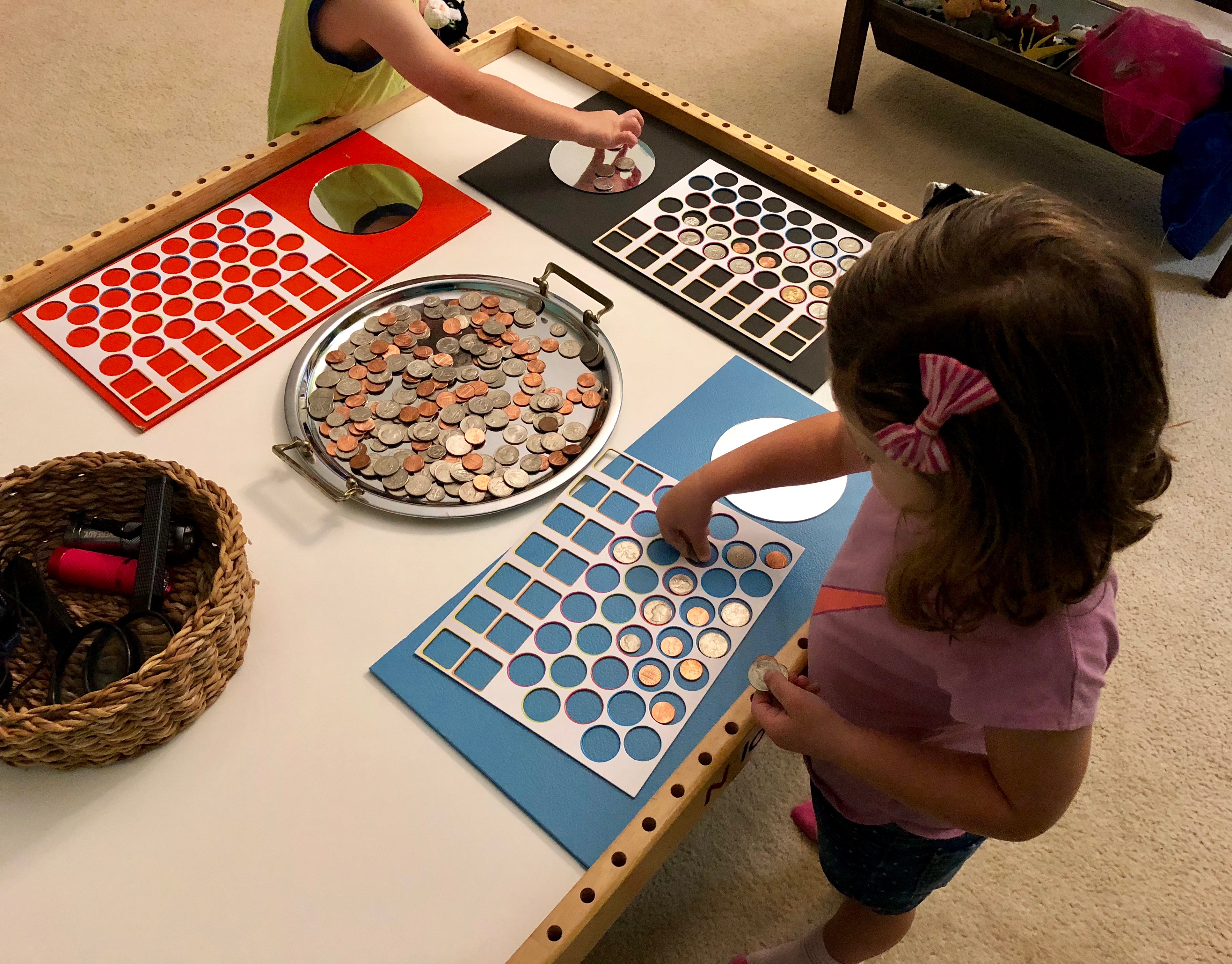Note: Playful Solutions is an education consultation company. The lead designer and co-owner is an educator who uses her extensive training in Project Based Learning and Environment as the Third Teacher to design spaces with our clients, not for them. The process is entirely collaborative. The end result is a vision that includes the voices of the learning community along with that of our lead designer.
 This project began with a tiny space and some BIG ideas! Lantern Road Elementary is a public school serving grades K-4 in Fishers, Indiana. They asked us to assist them in creating a maker space that reflects their unique school culture and values.
This project began with a tiny space and some BIG ideas! Lantern Road Elementary is a public school serving grades K-4 in Fishers, Indiana. They asked us to assist them in creating a maker space that reflects their unique school culture and values.


As we talked with the media center specialist about her vision for the space, she repeatedly spoke of her students’ passion for storytelling. Although the media center contained a generous supply of works from outside authors, and it was evident that the staff encouraged a deep love of reading and writing in their students, the environment itself did not speak to this passion.

It was clear that we were going to need more square footage to complete the vision. Thankfully, the staff and administration embraced our greatly expanded design plan. First, we divided the entire media center into 3 zones.
The staff moved bookshelves and reorganized books to create the first new zone called Stories by Others. This is now the more traditional part of the media center. It contains all of the free-standing bookcases that were previously spread out over the entire media center, the majority of the book collection, and desktop computers.
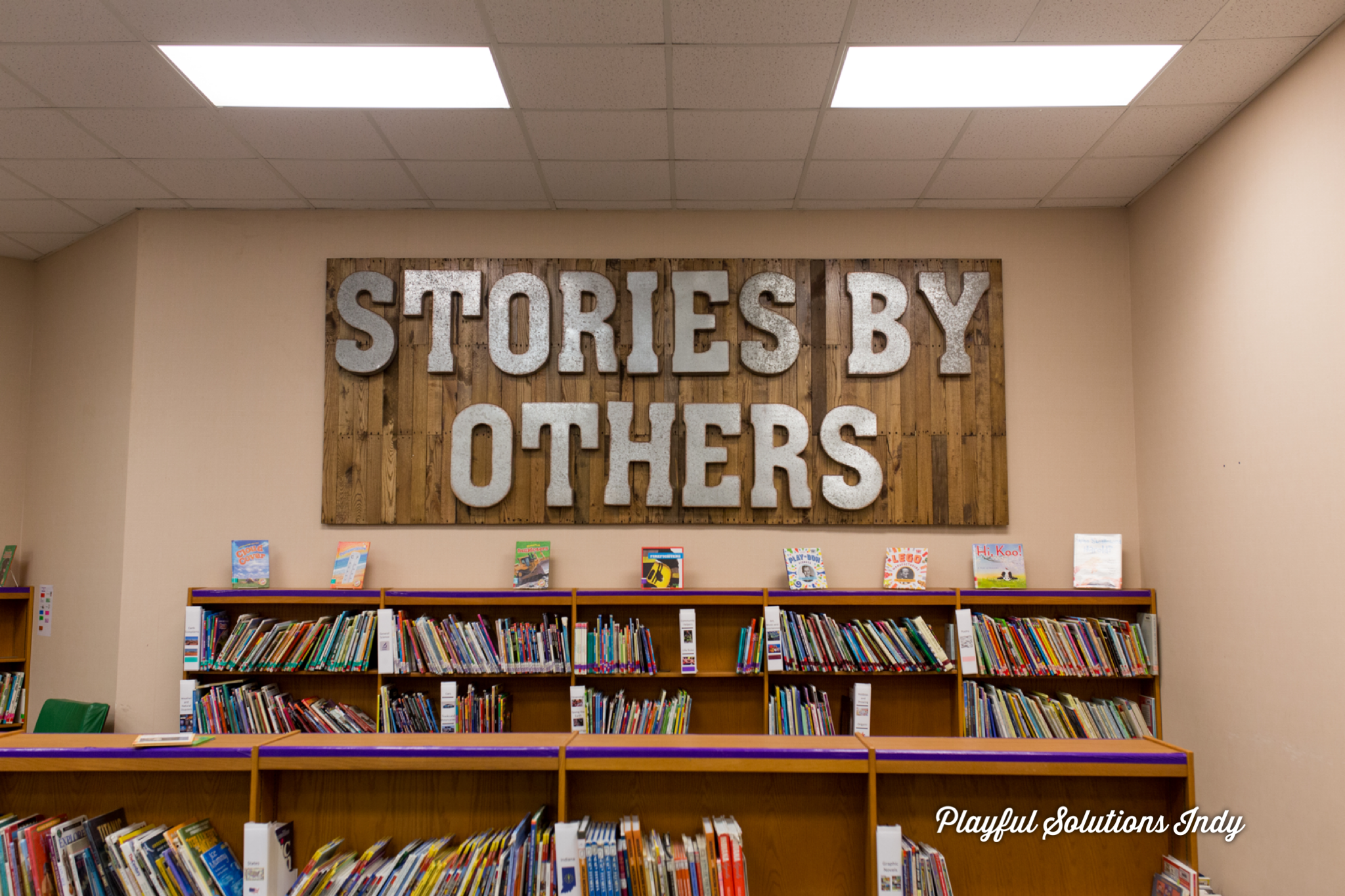
The sign is a Playful Solutions custom design that now defines the function of the space. We used reclaimed wooden slats and large metal letters to make a bold statement while also retaining a traditional “old library” feel.
Inquiry is the second zone. It had previously been a place solely for students to check materials in and out. However, it has now also become a place for rotating provocations, collaborative project work, and staff training.

The media center specialist removed the left half of the large check out counter to create a better flow from the front of the media center to the back. She also painted the back wall a neutral color. This color helped the new sign stand out even more!
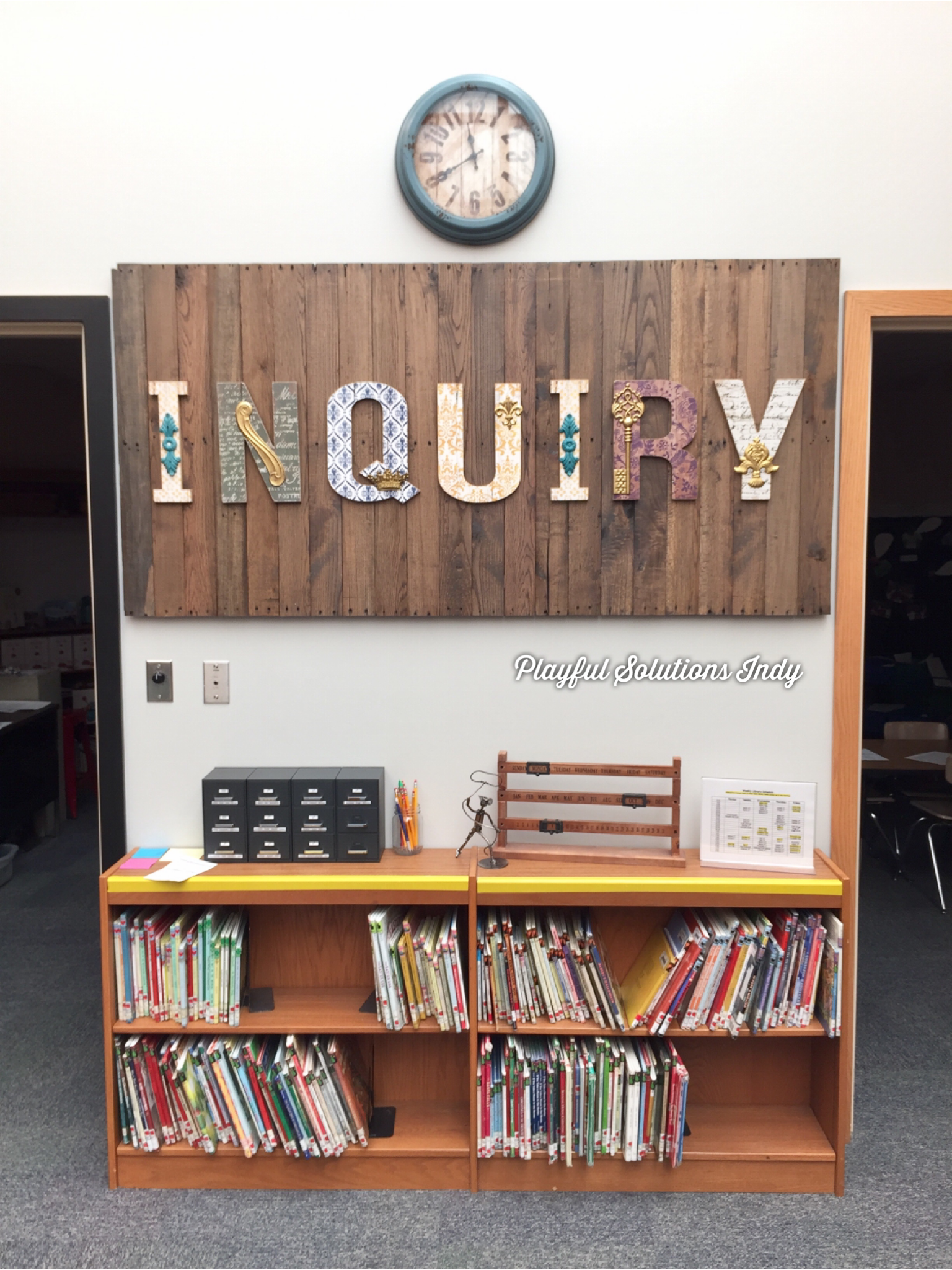
The Inquiry sign was another custom designed piece installed by Playful Solutions. We used reclaimed wooden slats and letters with cozy patterns, keys, and door knockers to spell out the purpose of the space.
The third zone underwent the most dramatic change to become Stories by Us.
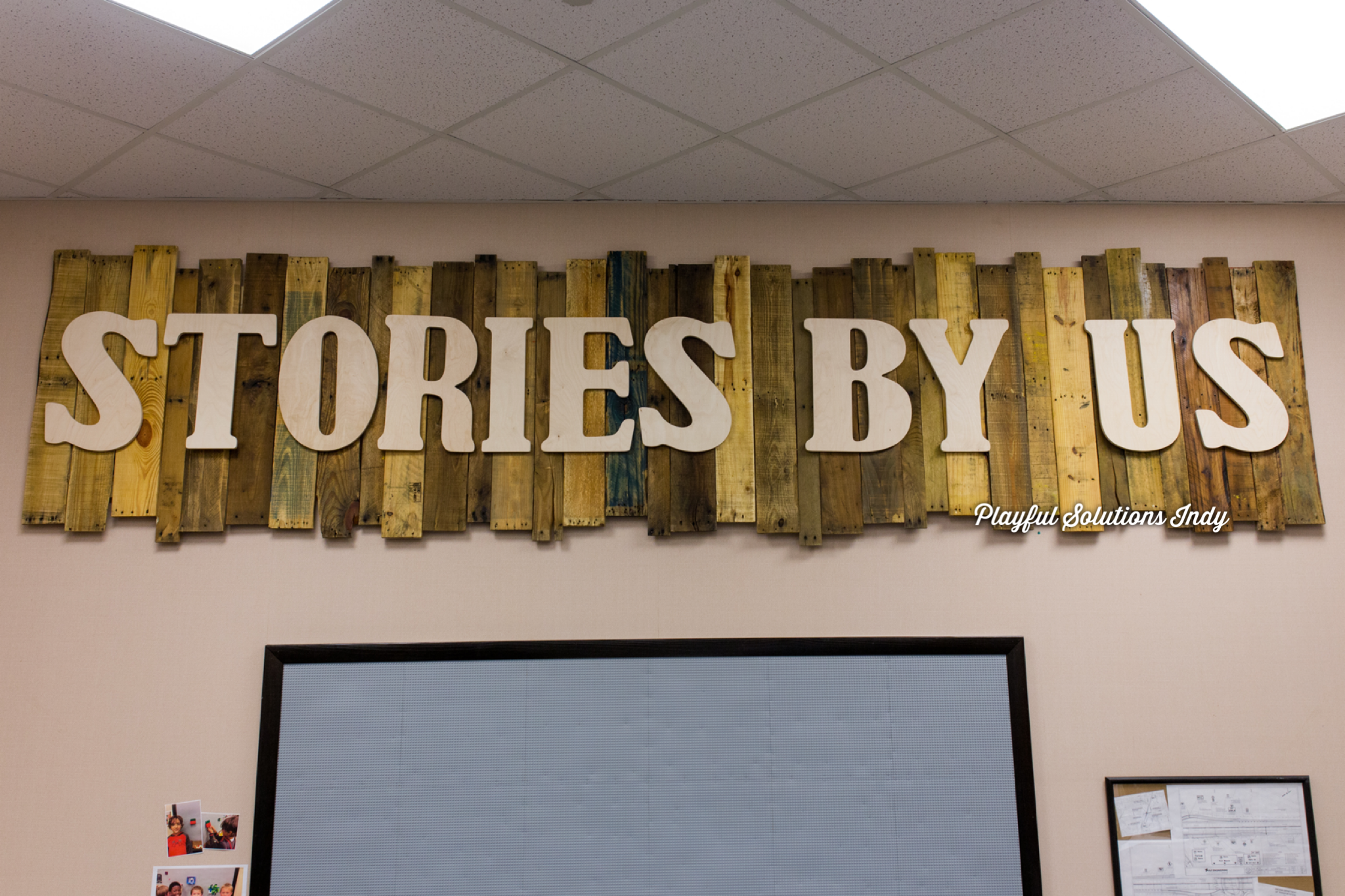
This sign was designed by Playful Solutions to be distinctly different from the other signs in the space, starting with the placement of the reclaimed wood. The wood pieces were staggered and stained in different shades to give the piece a more homemade look.

We also anchored these simple, unfinished wooden letters to the backboard so that they could be removed. We did this to give the students and staff the opportunity to finish out the design themselves! We look forward to seeing their work!
Playful Solutions designed 3 new Landing Spaces™ within the Stories By Us zone. The purpose of each of these Landing Spaces™ is for learners to be able to play out, document, and display their own stories using a variety of authentic tools and materials.
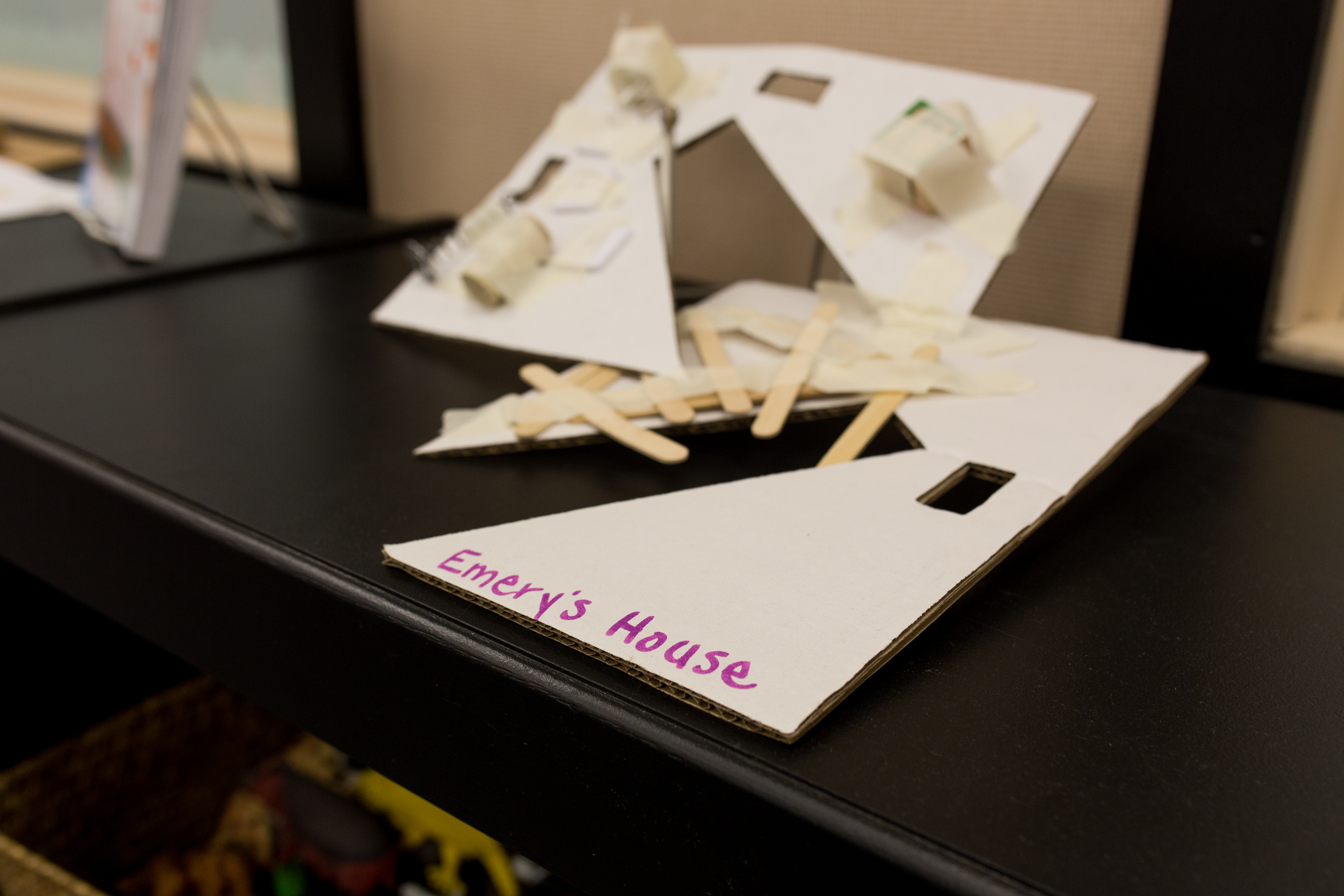
After we established the Landing Spaces™, Playful Solutions contractors got to work on custom pieces like this large, wheelchair accessible Lego wall. At the same time, we also set our client out on a task. For educators who enjoy a good treasure hunt, like our friends at LRE, this is often their favorite part of the project.
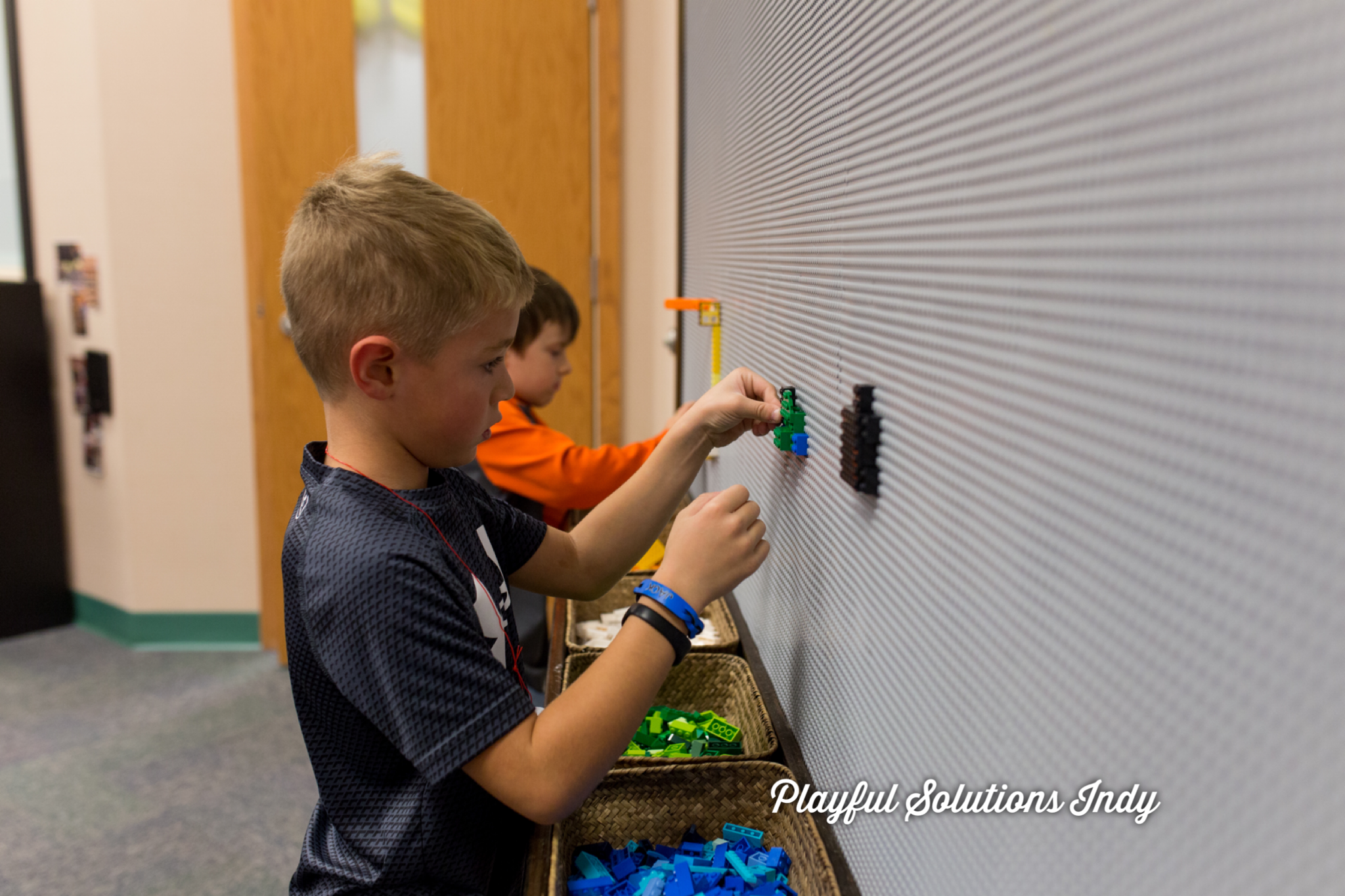
For this first space, we asked the media center specialist to use her unique connections with other educators, school families, and even members of the community to hunt for research materials and authentic tools related to fields like geography, engineering, and architecture.
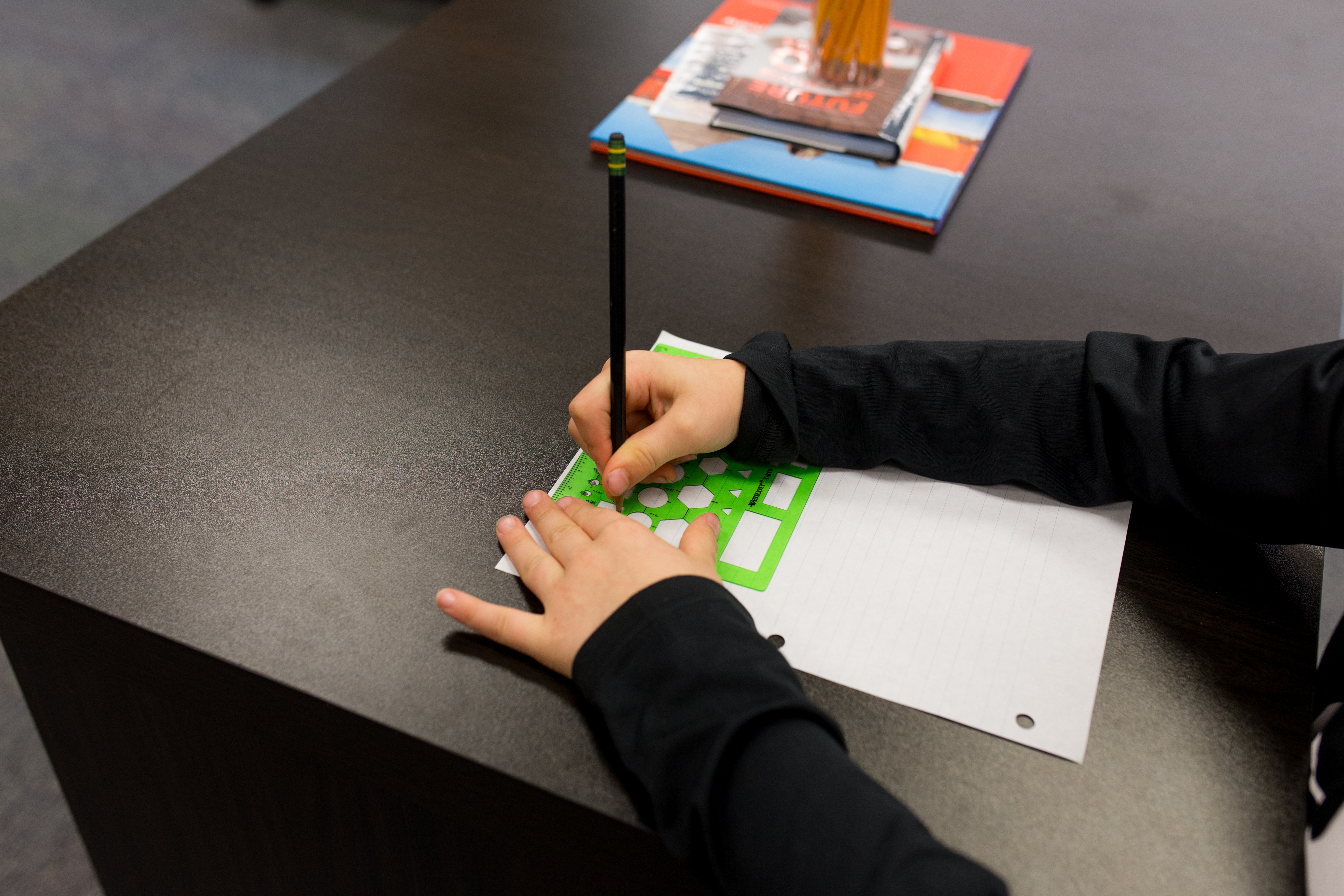
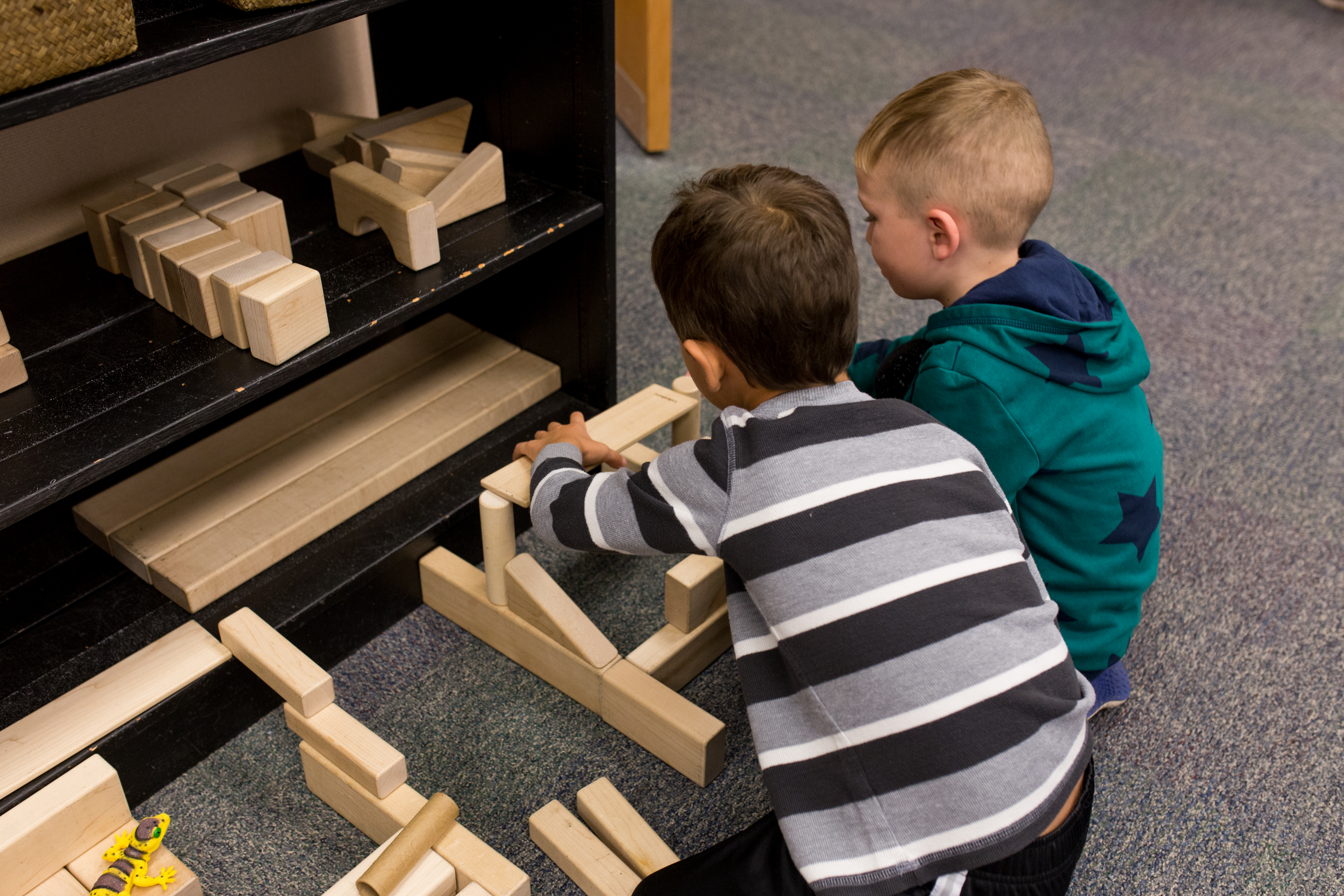
We also asked her to try to acquire authentic blueprints of some of the local buildings. The response from the community was amazing! She received so many blueprints (including blueprints from a brand new IKEA store nearby) that they were able to display some of the blueprints in a large frame next to the Lego wall, while others are easily accessible for students to roll out and mark up either on the floor or on the standing table.
The second Landing Space™ in Stories by Us was inspired by this storage unit and a closet full of old games.

The media center specialist told us that the children loved exploring games, but most of their games were missing pieces, so they had been stored in a closet. This was the perfect opportunity for students to create their own stories through game design!
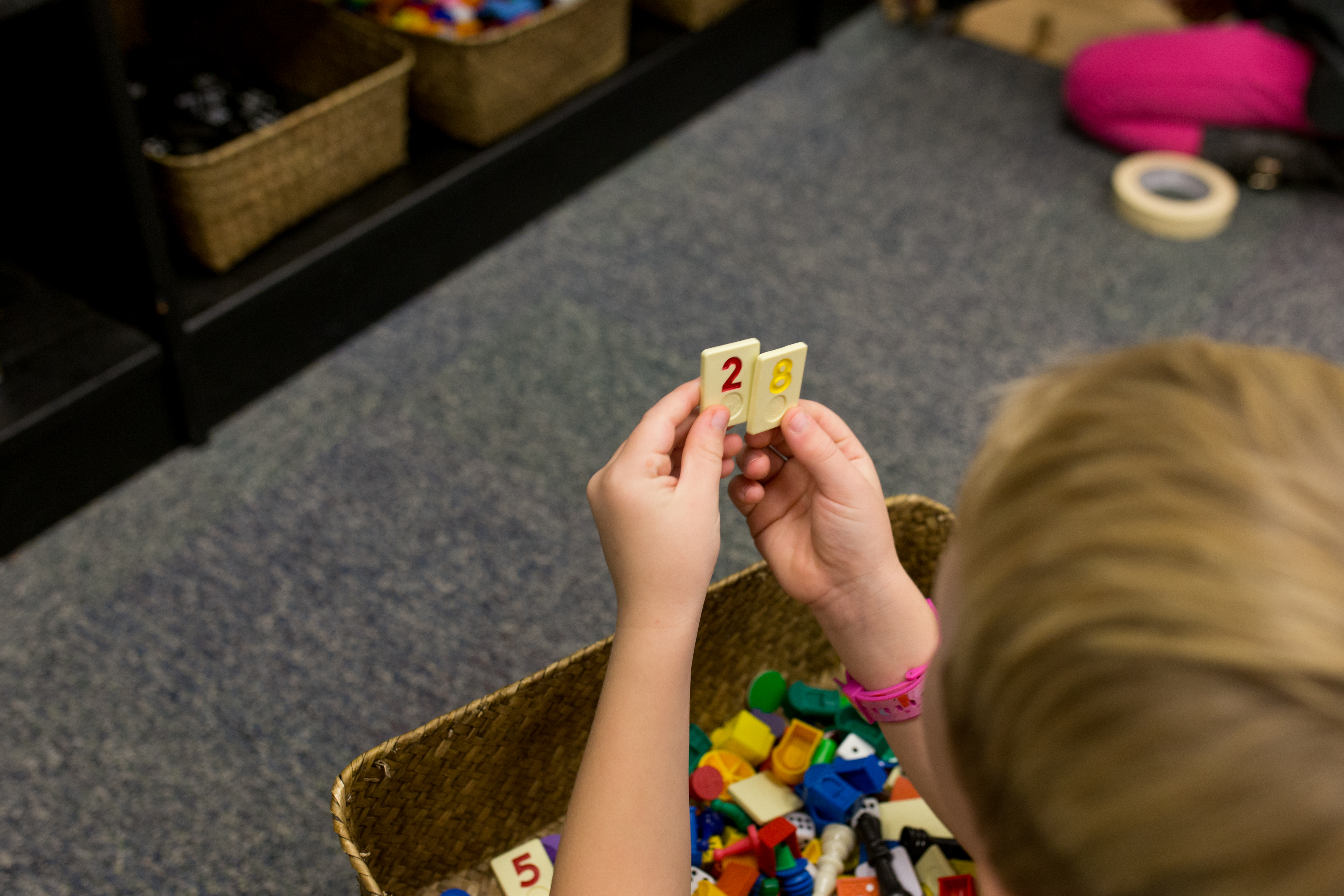
We asked the media center specialist to combine all of the game pieces and accessories together.
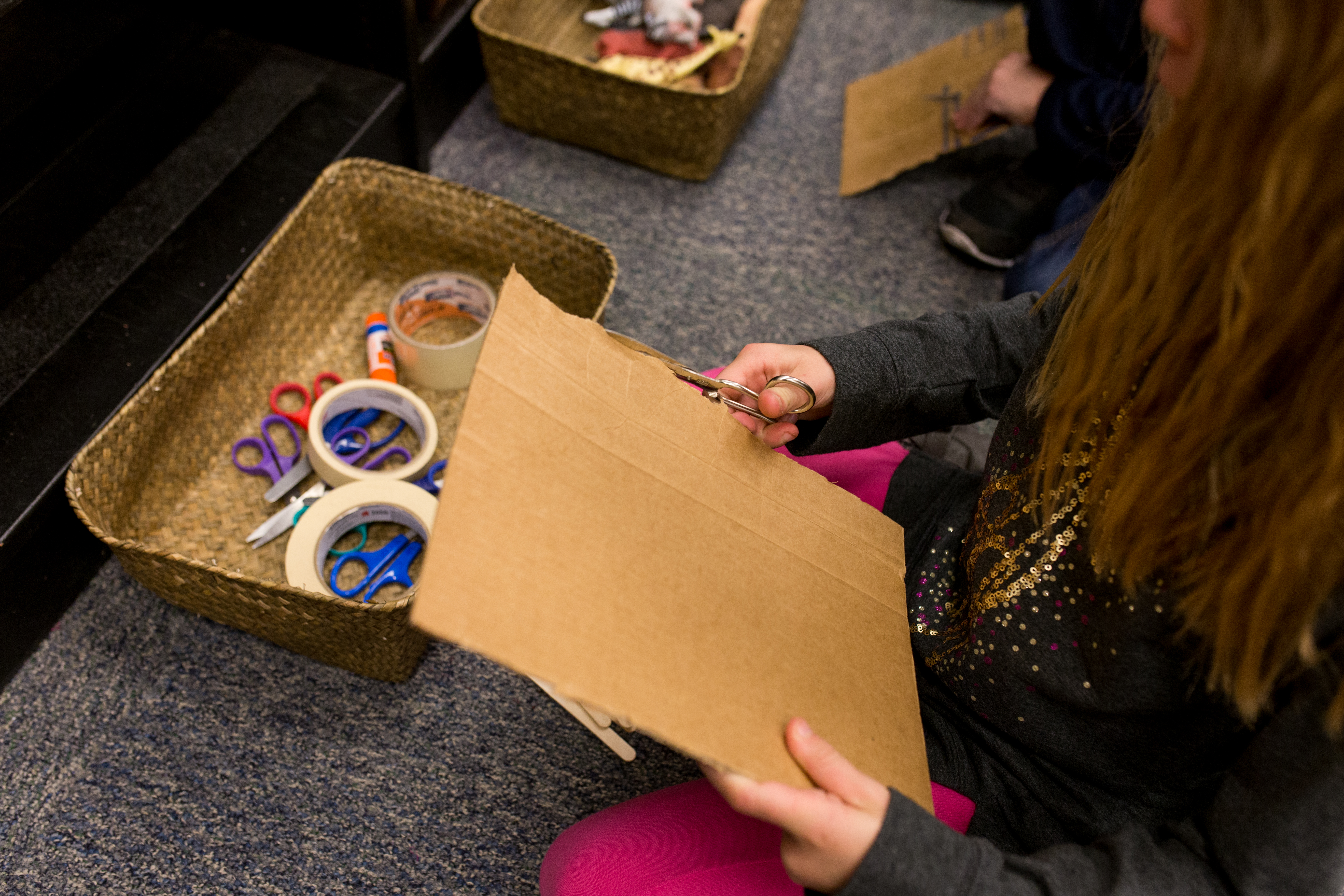
We also asked her to gather materials and tools for students to be able to make their own boards, document their game stories, and keep score.
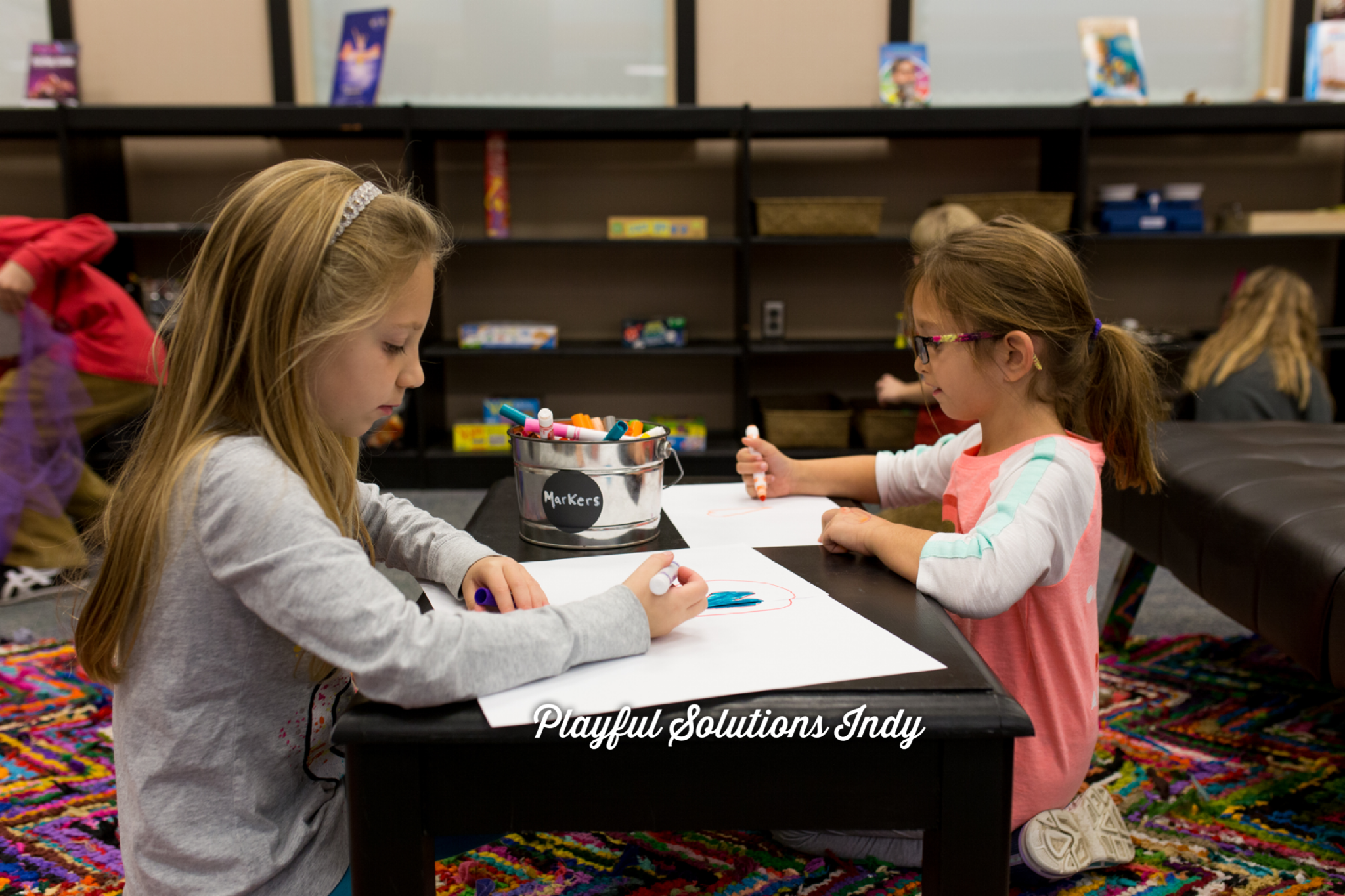
The final and largest Landing Space™ of Stories by Us is for dramatic expression. Playful Solutions designed and installed a large custom stage at the front of the media center, so that children can create their own backdrops directly on the windows or create their own props to stand up behind the stage.
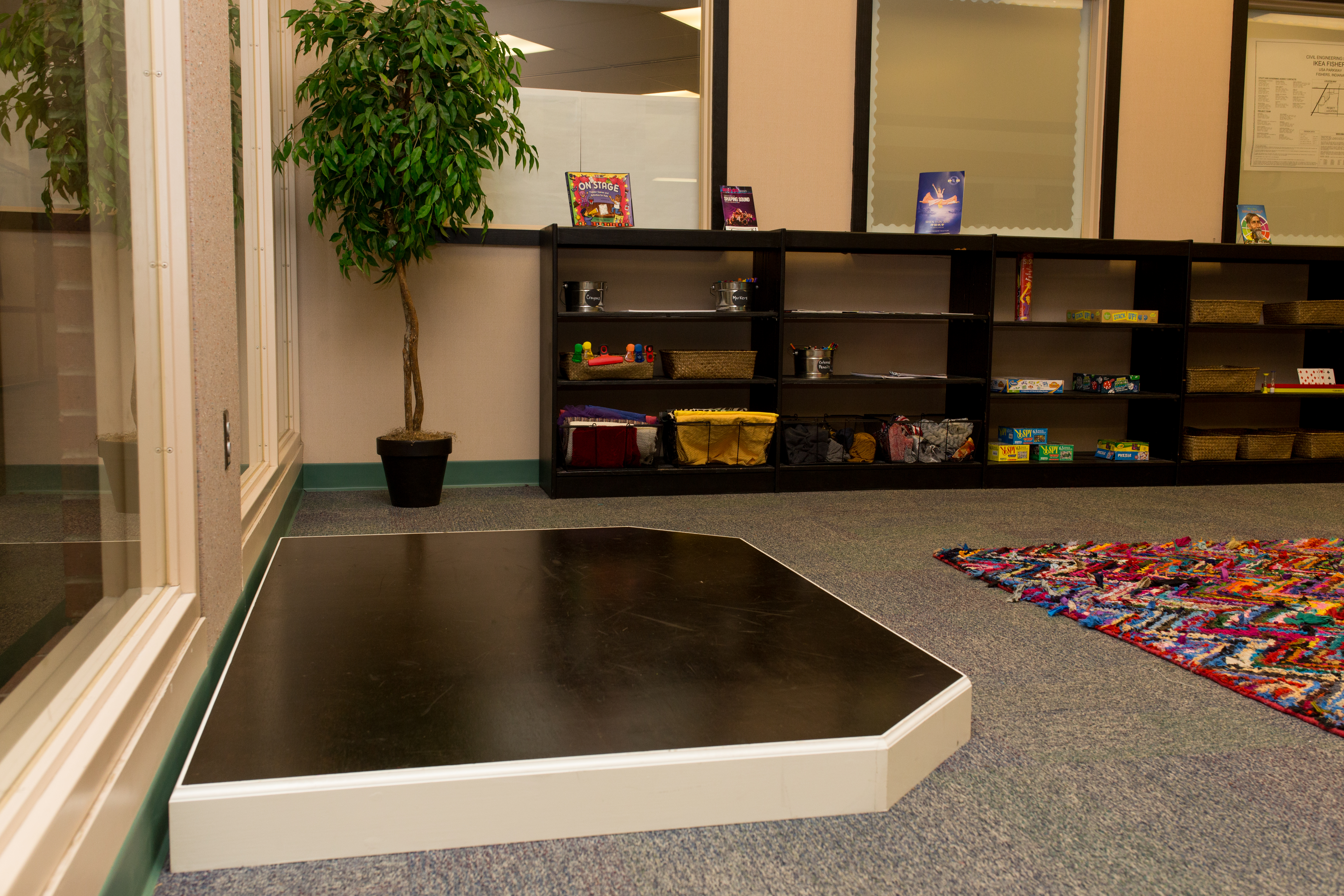
For this space, we asked our client to collect materials or tools that might be useful for actors, directors, dancers, singers, songwriters, or poets. We suggested items like fabric, scarves and ties, costume jewlery, chip clips, and playbills and concert pamphlets to name a few.
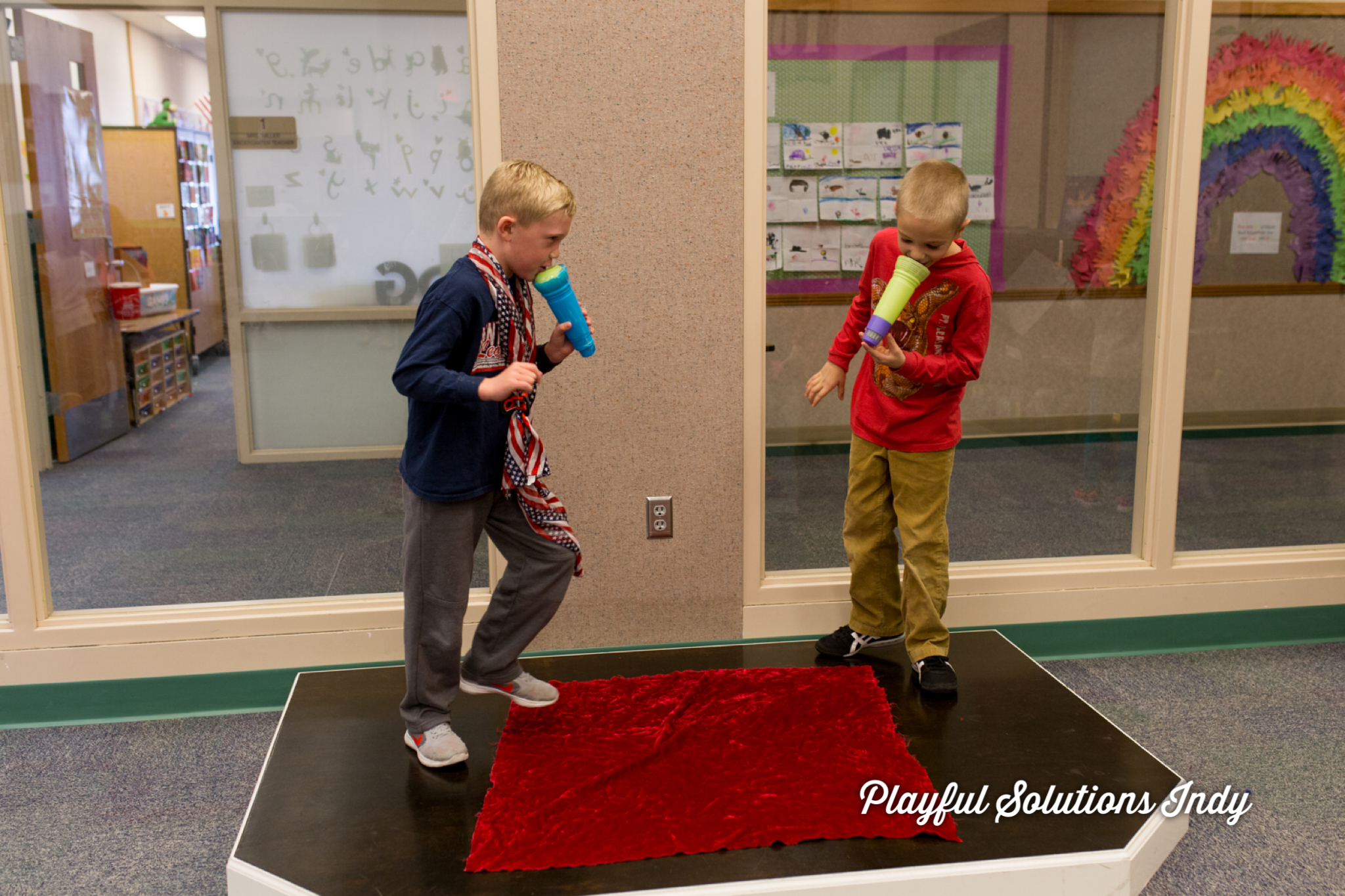
We also designed and installed one of our exclusive Sensory Kitchens™ in this space.
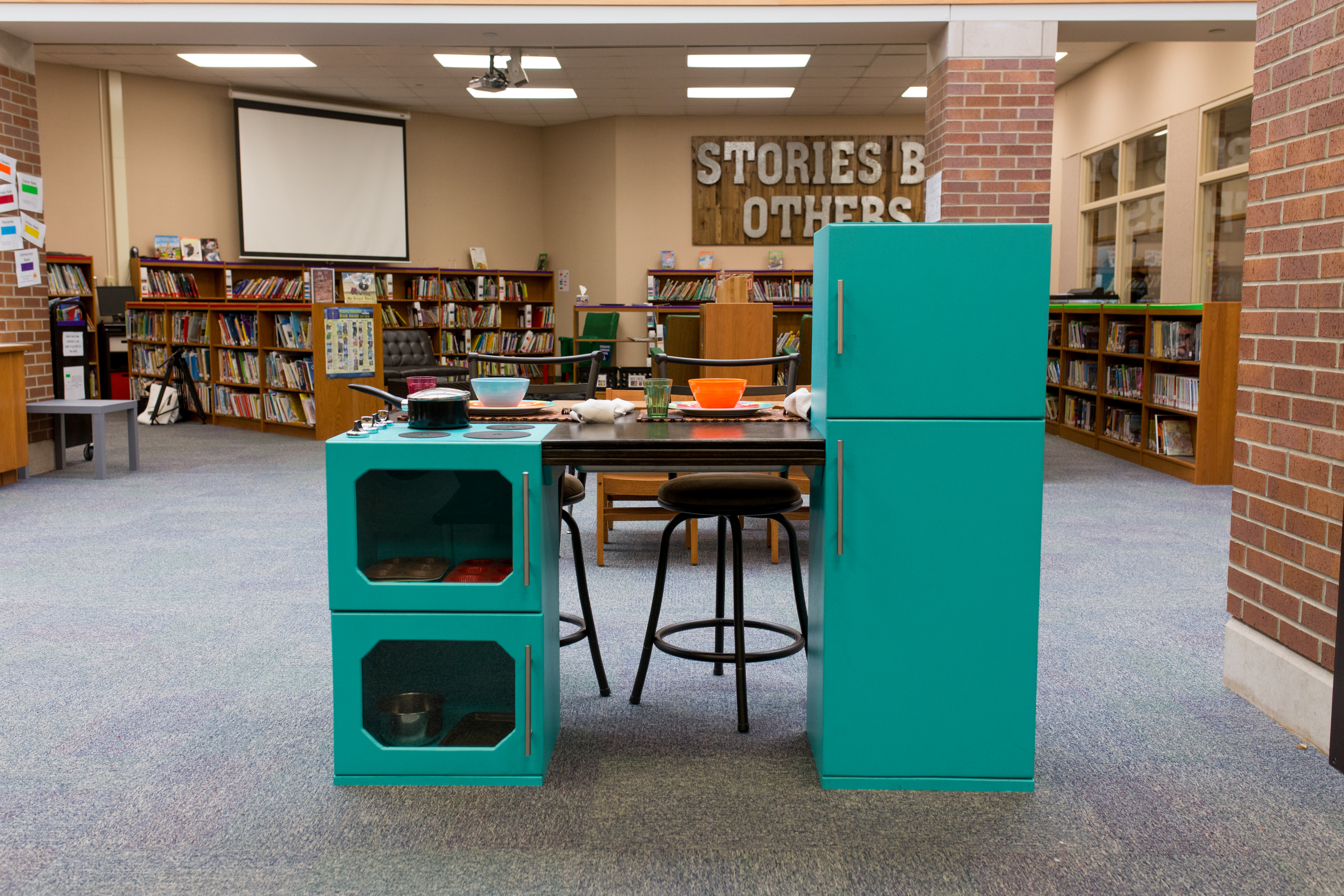
This was a perfect choice for the Stories by Us project because:
1. Many of the children’s ideas centered around food: a coffee shop, ice cream, a chocolate fountain, etc.
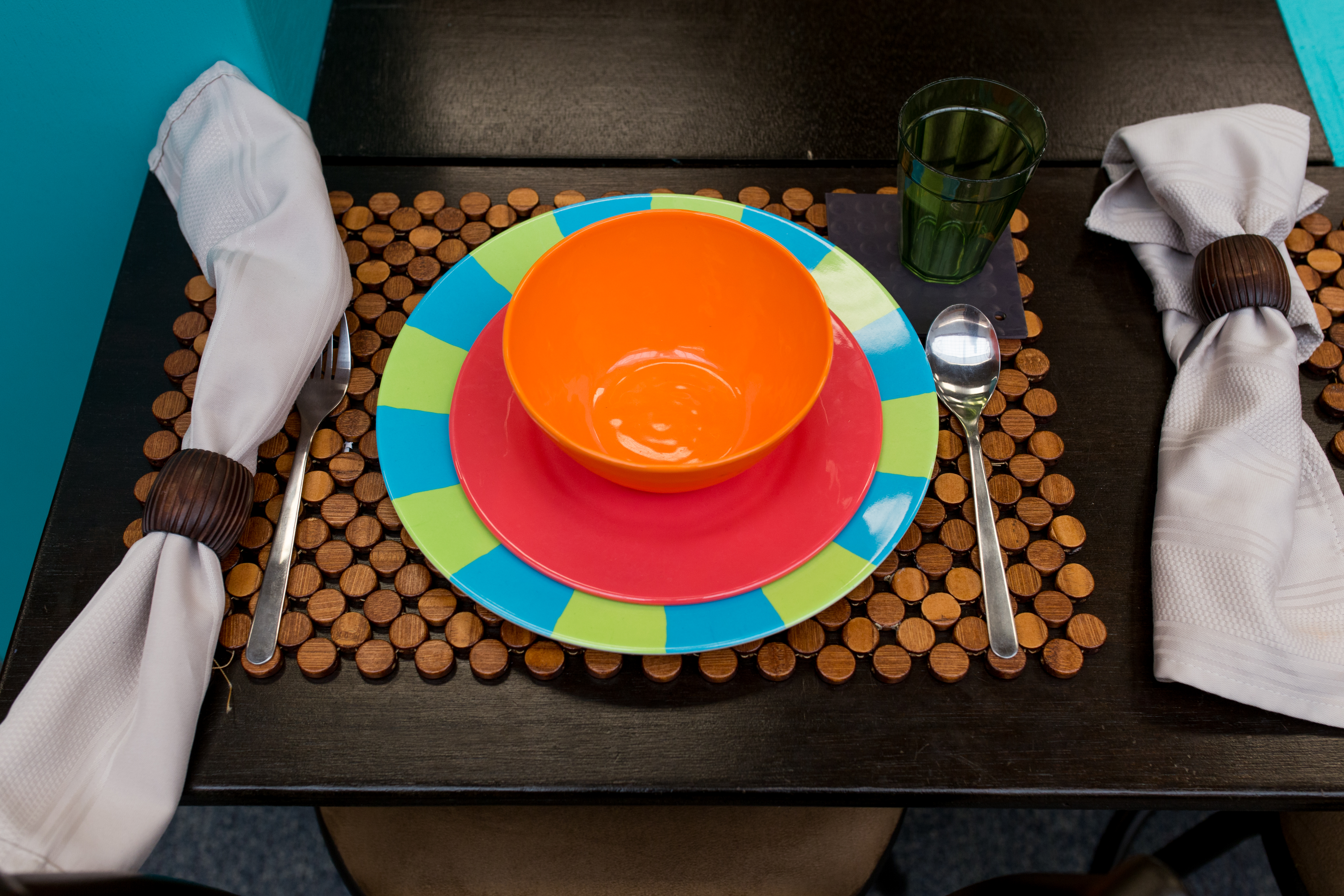
2. We often associate food with community and conversation, which is a natural form of storytelling.
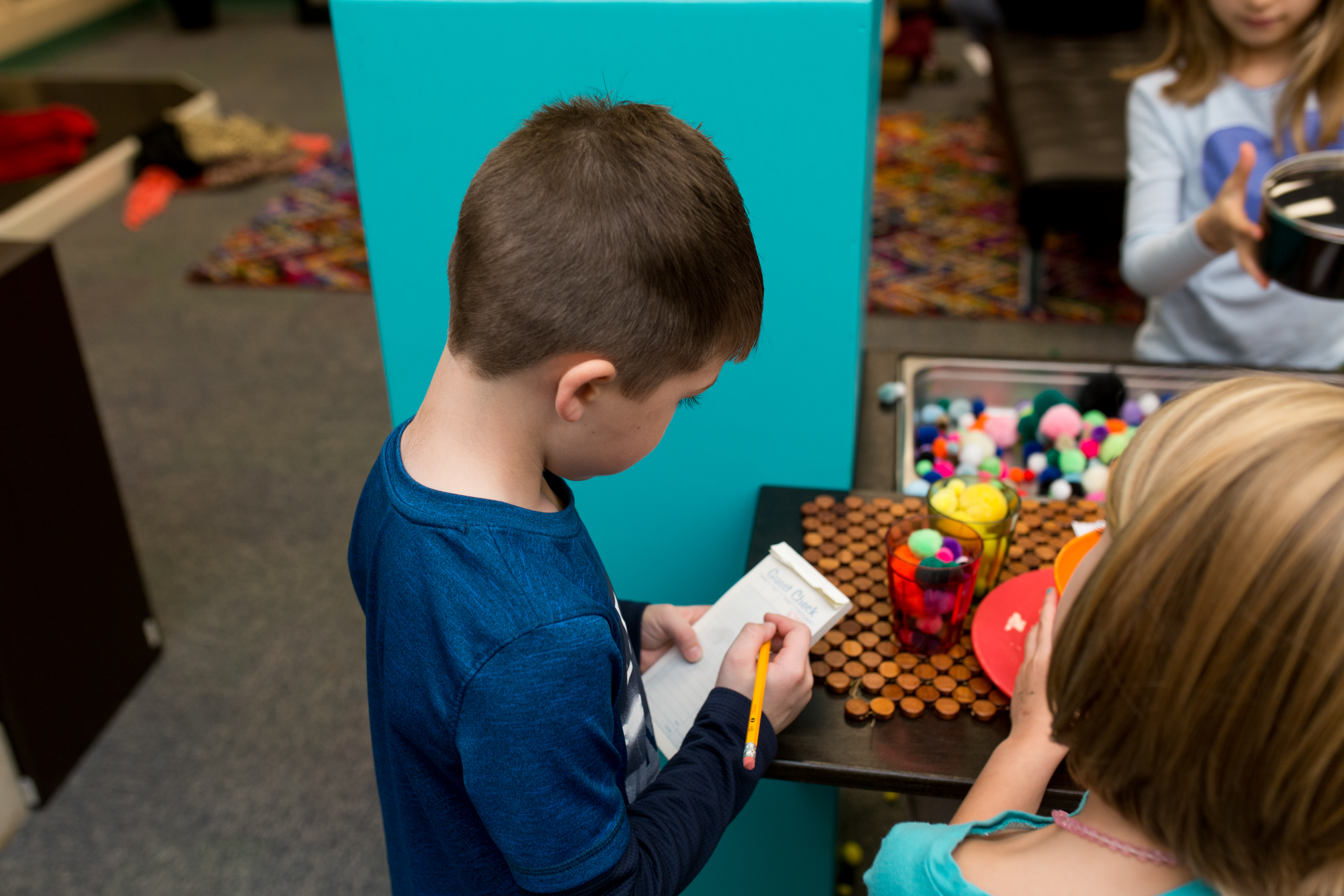
3. The kitchen provides endless opportunities for authentic literacy and meaningful writing in a playful way.
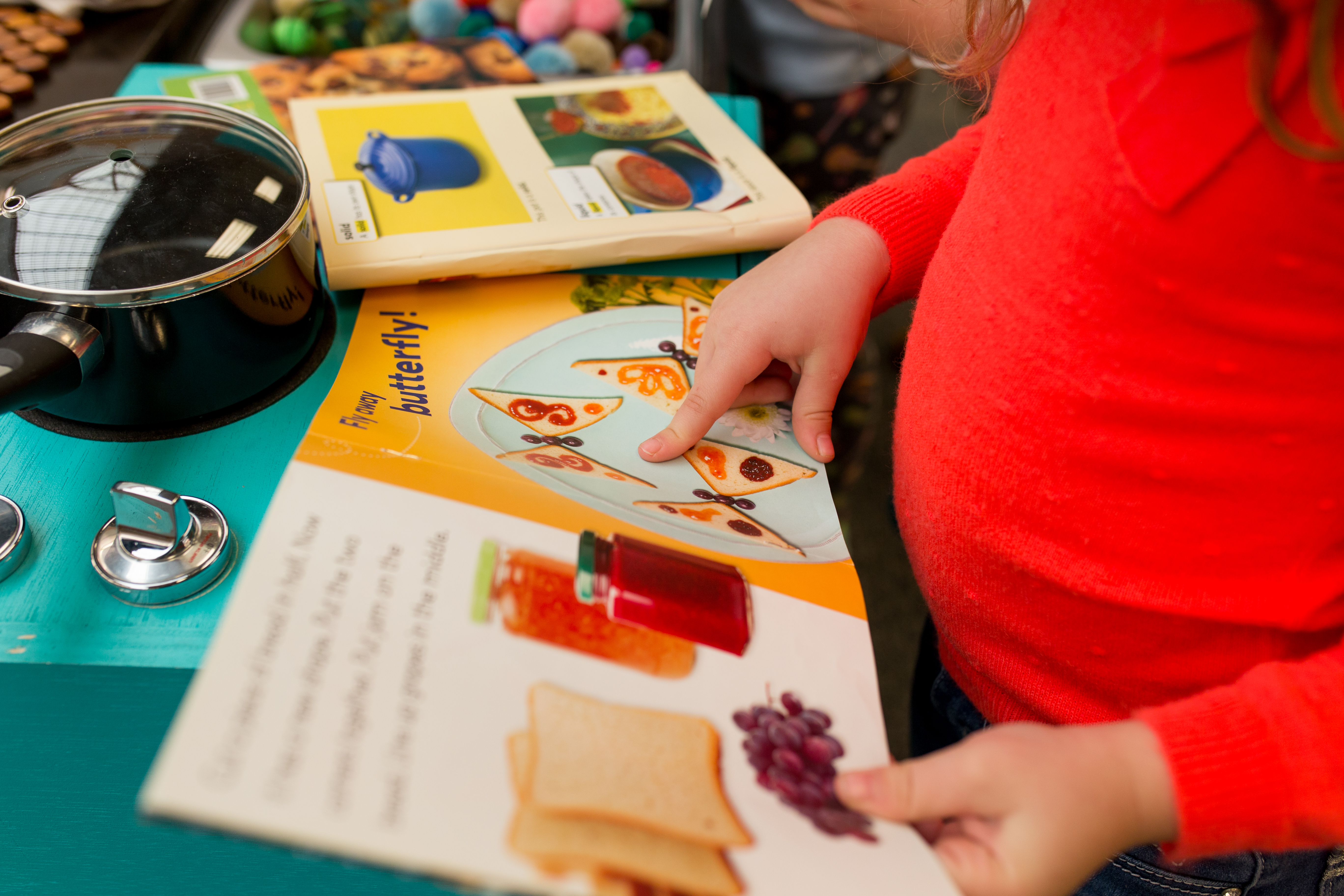
4. The Sensory Kitchen™ is a place to practice life skills and can be used to enhance cultural studies. We encouraged the media center specialist to rotate what is in the sensory bin as well as any books, tools, and materials used with it. In this way, the kitchen can accommodate project work involving cultural studies.
International grocery stores contain dry goods with unique textures and smells that will easily fill the kitchen’s sensory bin. There are different tools used in kitchens around the world. The kitchen can open up opportunities for family engagement and a cultural exchange of ideas surrounding food rituals and historical recipes. It additionally encourages entrepreneurial skills.
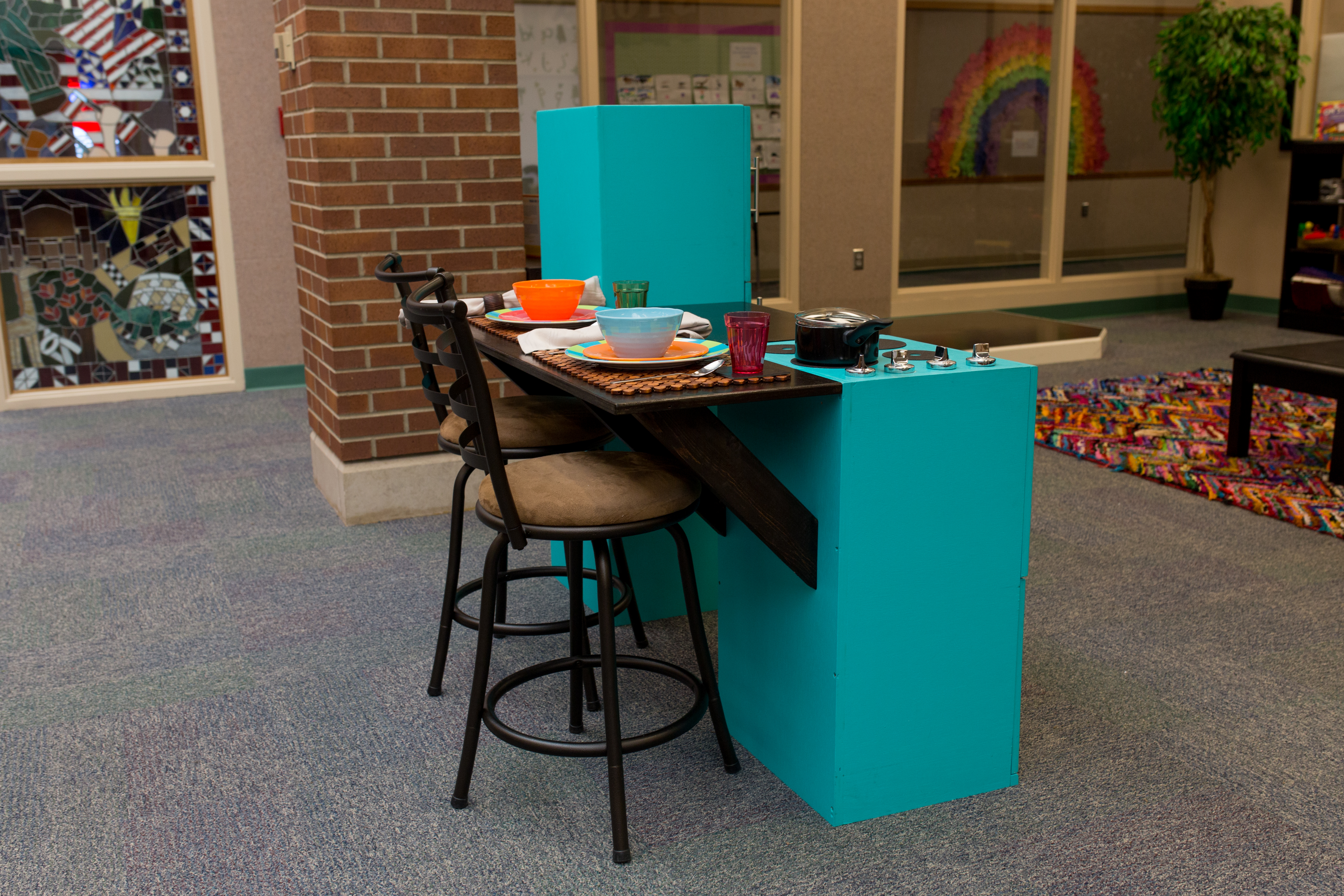
We matched the color of the kitchen to one of the colors in the rug that the media center specialist loves, and chose a dark stain to compliment the beautiful, rich color.
We added a bar-top table to the back of the wheelchair-accessible kitchen to give them more counter space, and to encourage a natural flow of conversation.
Every part of this design incorporates loose parts theory, so there is a great deal of cross-pollination. The environment encourages architects, poets, and executive chefs to collaborate and come together to share their ideas and their stories.
After the Project
We returned to take some of these photos several months after the project was completed and were surprised to see that very little had changed. The intent of our designs is to encourage flexibility; to show how the environment can change to meet the growing needs of learners. However, since this is a media center, the children are only here for a short time, 1 or 2 days a week. We were happy to see that they were still fully engaged with all of the materials!
The media center specialist reported that she attempted to switch out just one of the provocations, but the children immediately noticed and implored her to bring it back. She is a great example of an educator following the lead of her students, and I am sure that there will be many more stories to come from Lantern Road Elementary.
